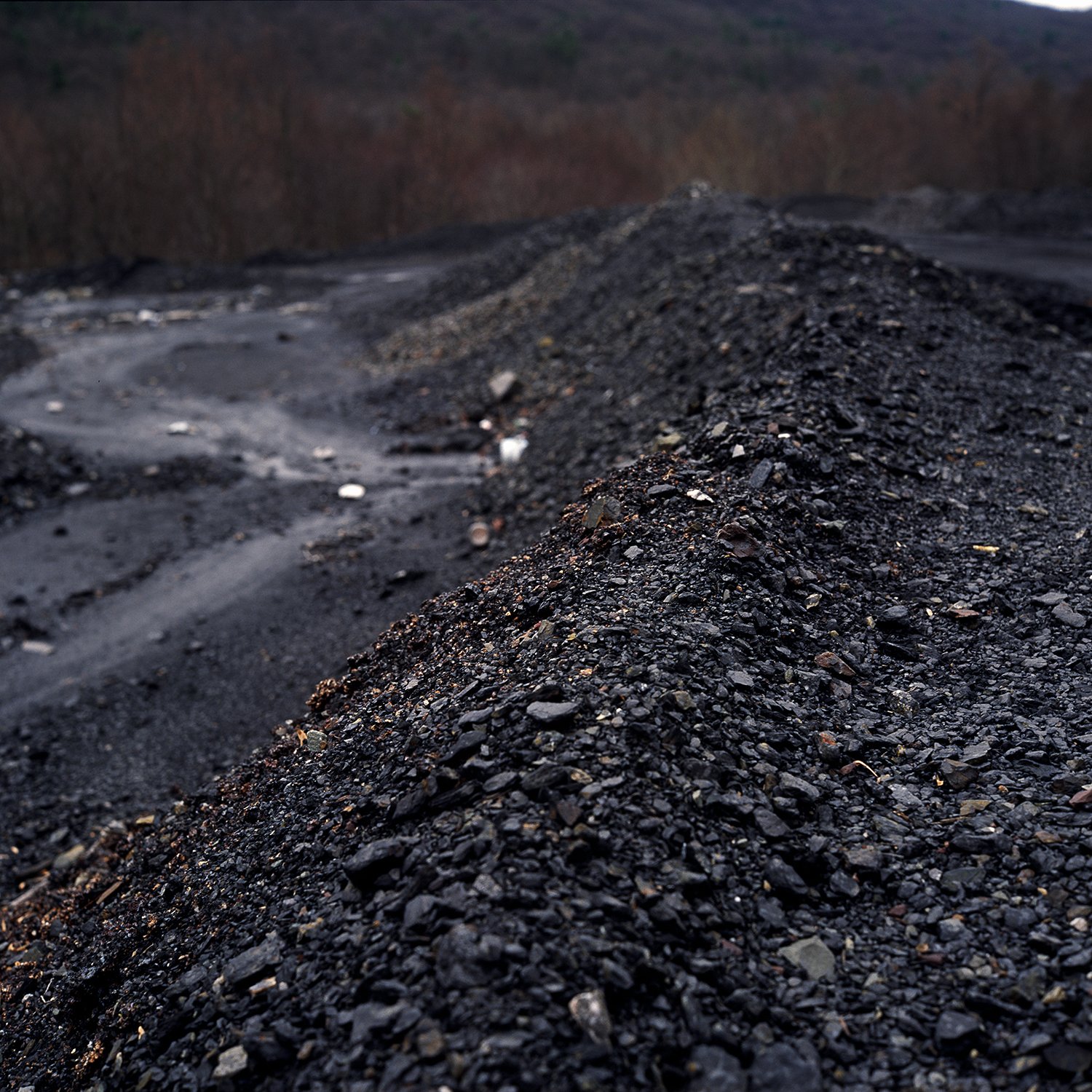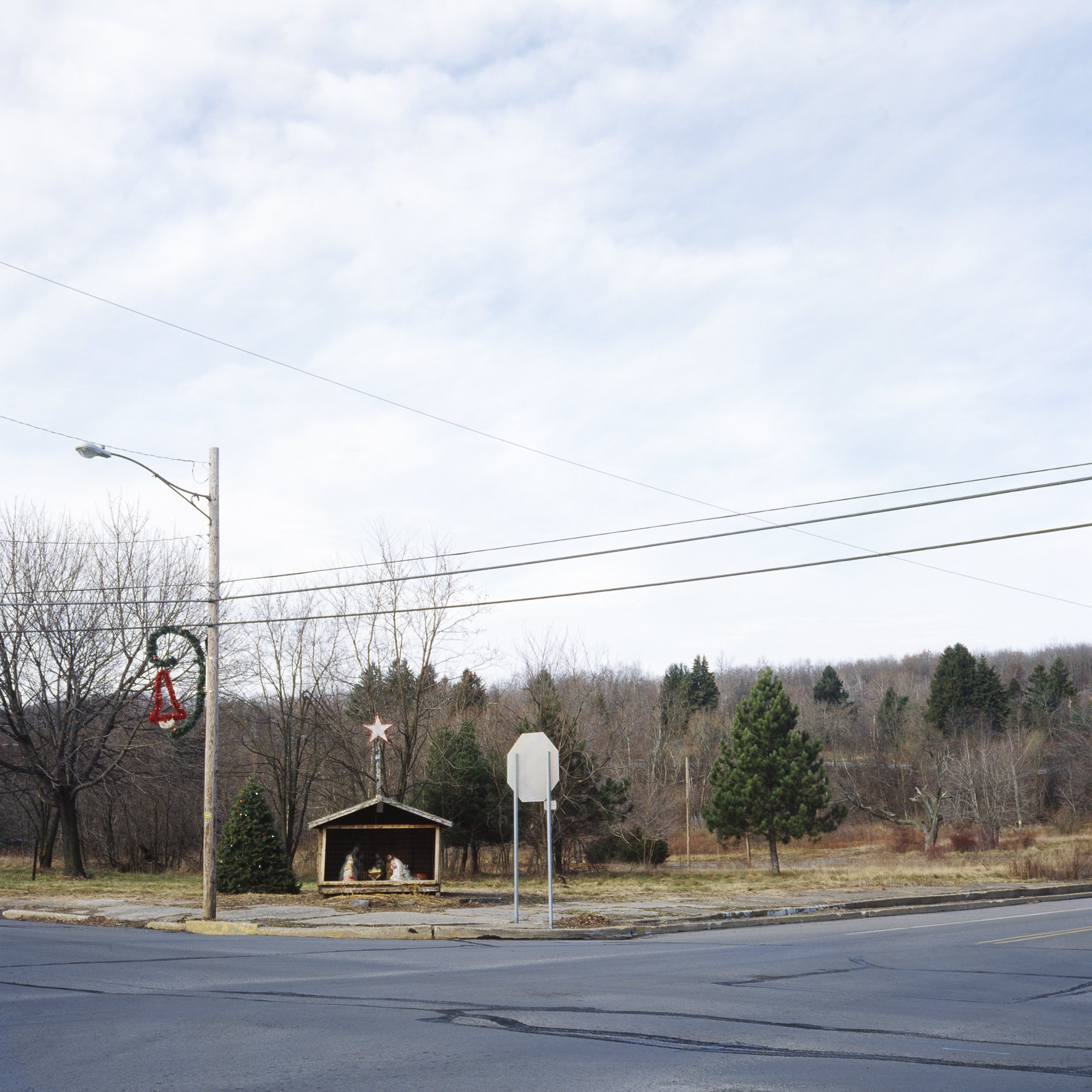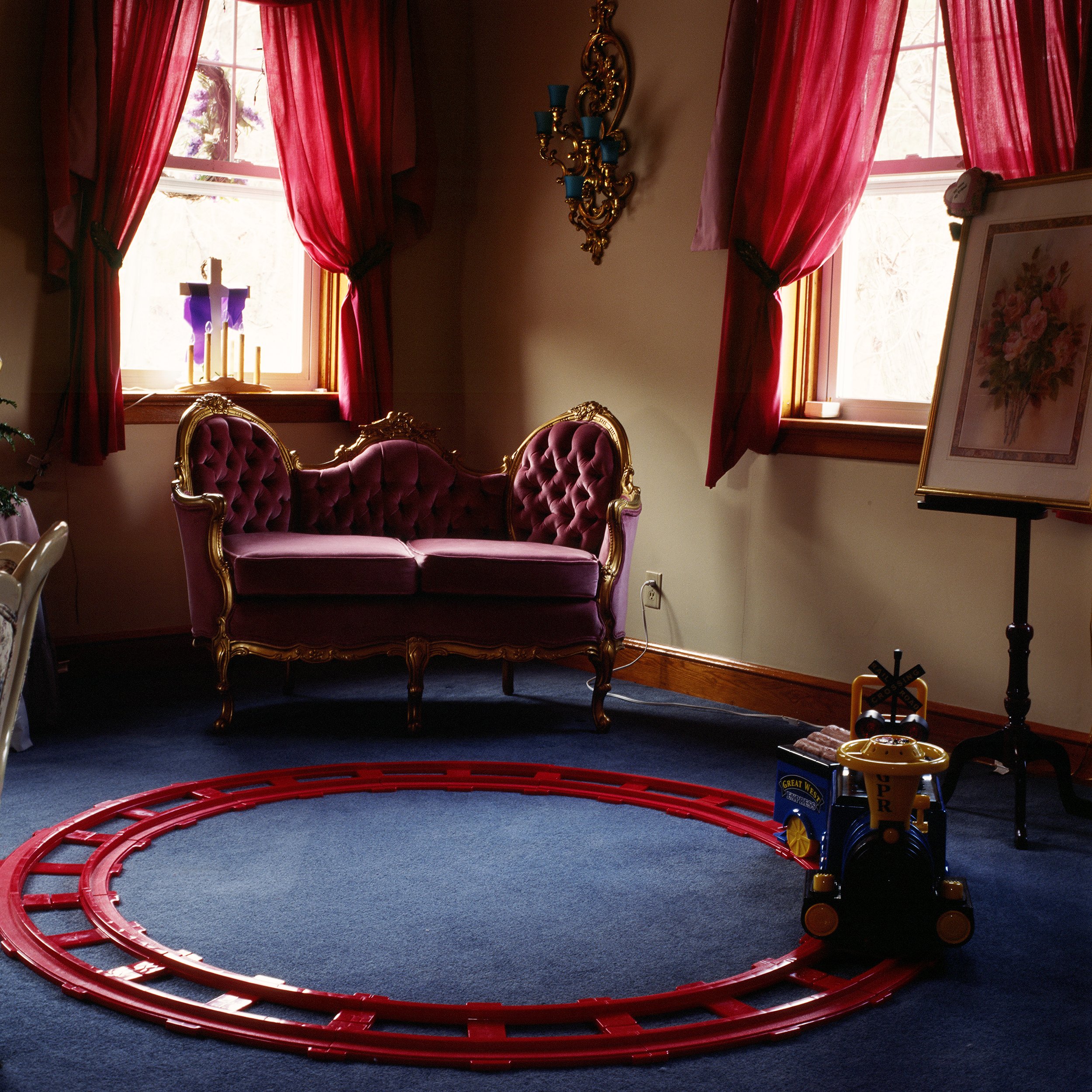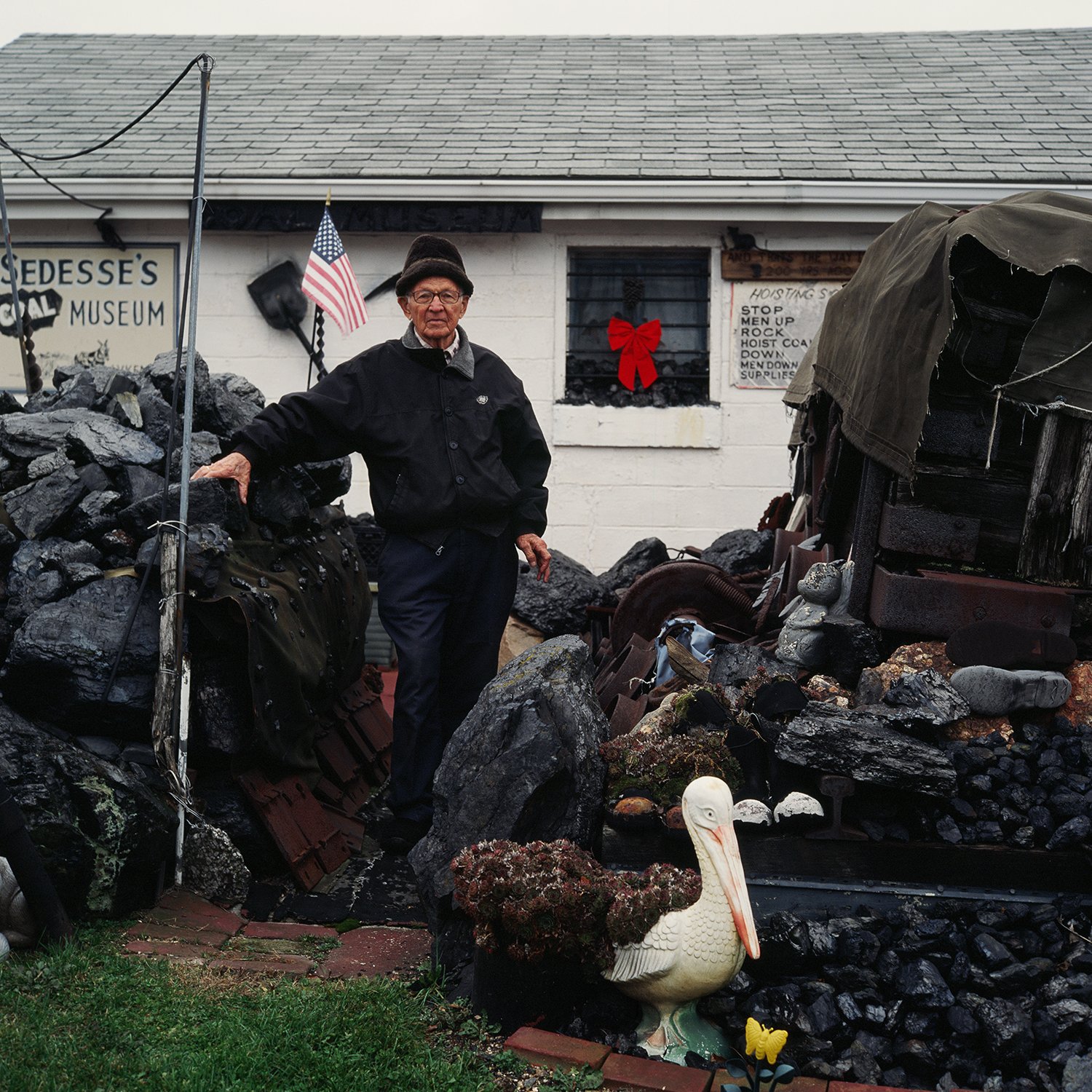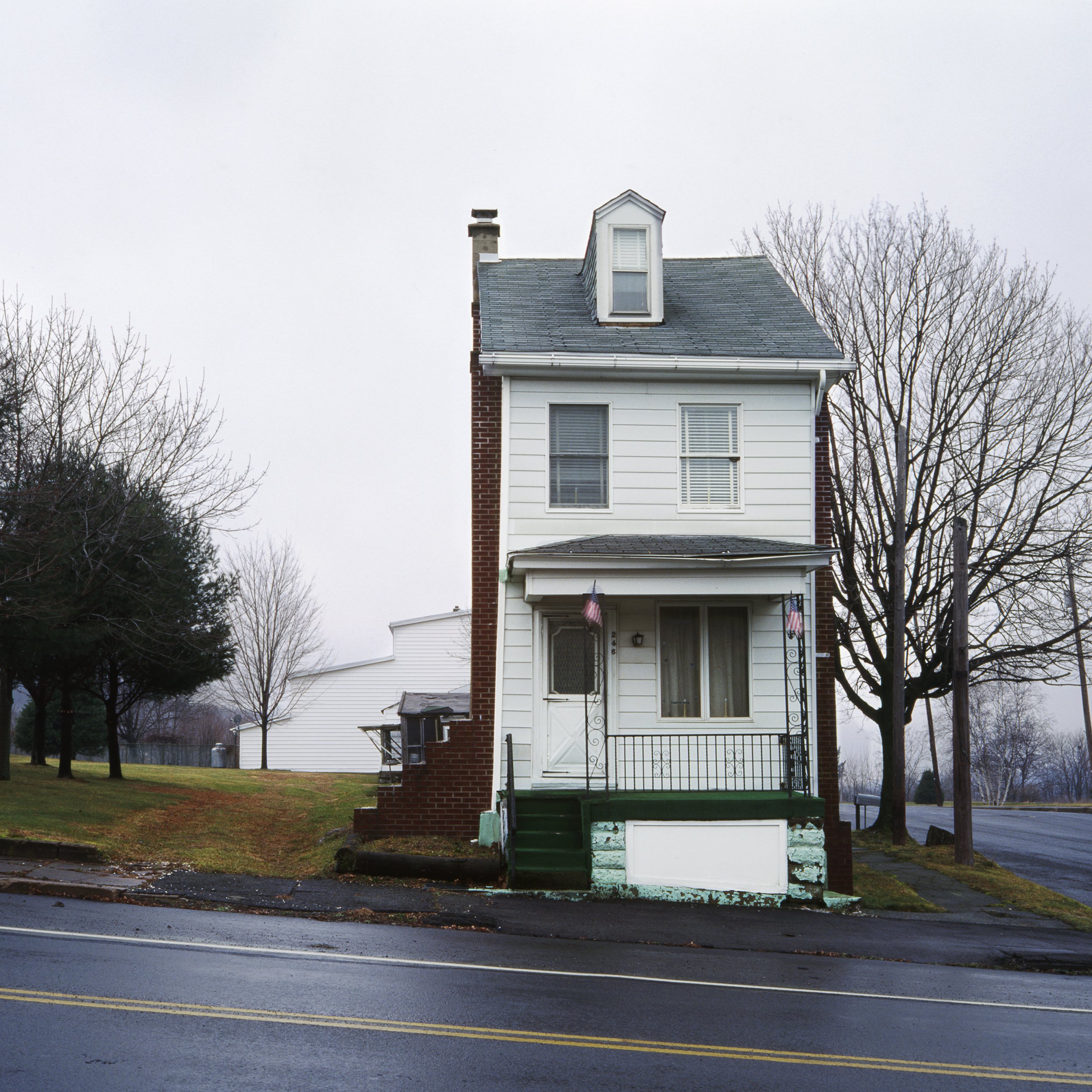COAL HUNKIE (2005-2007)
In the high rounded Appalachian mountains of Northeastern Pennsylvania, anthracite coal lies in diagonal and vertical veins in the rock strata under steeply pitched, dense woods. This 484 square mile area, known as the Hard Coal Region, is home to one of the largest deposits of anthracite coal in the U.S. The history of the area is rich and violent, staggering and disturbing. In 1930, the industry employed nearly 200,000 people and the area was home to 1.2 million. In 2007, when I finished making these images, the population was approximately 800,000 people; 954 men and women work in the Anthracite industry.
Here, history stands on front stoops, brushes past on narrow, cracked sidewalks, peers down from working coal breakers. Little has changed since the mid ‘60’s, as the economy has very little room to grow or expand. It is easier to strip mine here, as the pitch and the depth of the coal veins make underground mining dangerous and difficult. Mountains turn into vast holes in the ground and are later filled in, creating a landscape that is unnaturally smooth and unnerving.
All of this, the mountains, coal and economy, creates a culture that is unique to the area. At the same time, it is typical of working class areas in the United States that had experienced massive growth in the early 20th century and economic decline post World War II. The landscape shapes the industry and towns, which in turn shapes the people, the culture, as well as private and public spaces.
Coal Hunkie examines the remnants of a social landscape that outwardly suffers from little economic support from its industrial past. It quietly investigates what it means to stay despite of the ruin, why hold onto such a deep pride in the small towns and that history, and to be of a place rife with complication.




